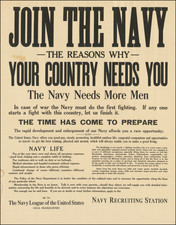Florida Hermaphrodites
The text describes hermaphrodites who are shunned by the natives, but used to carry supplies and victims of warfare, wounded, sick, or dead, either on their backs or on litters made of reed mats. The litters are carried with poles and leather straps which are placed around the head.
The text translates as follows:
FREQVENTES speaks of Hermaphrodites, individuals who possess characteristics of both genders. These beings were not only recognized by the Indians but also held in certain regard. However, it is their physical strength and resilience that have rendered them useful for labor-intensive tasks, especially those akin to beasts of burden. When monarchs ventured out to wars, it was the hermaphrodites who were entrusted with the responsibility of transporting provisions. Furthermore, upon the demise of any Indian due to injuries or illnesses, these hermaphrodites employed two robust staffs laid crosswise, atop which a stretcher constructed from slender reeds would be fastened. The deceased would then be positioned on this structure, cushioned with a hide under the head, another bound above the abdomen, the third one above the thigh, and the last one above the calf. The exact rationale behind such a method remains elusive to me, yet I surmise it is possibly for the sake of magnificence. It's noteworthy that not every deceased is adorned thus; at times, only the calf is bound. Following this, they would employ leather belts, spanning three or four fingers in width. The ends of these belts are attached to the aforementioned staffs, and the central part is pressed against their remarkably firm foreheads. Thus equipped, they convey the departed to their final resting place. It is also notable that those who fall prey to contagious ailments are transported on the shoulders of these hermaphrodites to designated locations. Here, they are nursed back to health and provided all essentials until they fully recover.
The engraving was published by Theodor de Bry in his Grand Voyages (1591), based upon watercolor illustrations made by Jacques Le Moyne de Morgues, are the earliest known European depictions of Native Americans in what is now known as the United States. Le Moyne, a member of the short-lived French colony known as Fort Caroline founded by Huguenot explorer Rene Goulaine de Laudonniere (ca. 1529-1574), based the watercolors on his experiences in Florida in the 1560s.
De Bry later published Le Moyne's work, along with other illustrations of the New World, as part of an effort to encourage European colonization in the Americas. Jacques le Moyne de Morgues, an illustrator and explorer, sailed with René de Laudonnière on the 1564 Huguenot expedition to Florida. Laudonnière set up Fort Caroline on the St. John's River in 1564, but the settlement was destroyed by the Spanish army under Pedro Menendez de Aviles.
De Bry's Engravings of the Florida Indians
For his Grands Voyages, De Bry engraved 42 plates based Le Moyne's original sketches made during the French Huguenot voyage to the Florida Peninsula. De Bry's renderings of Florida and its inhabitants are today the earliest known printed European images of Native Americans in present-day Florida, known as the Timucua Indians.
The images attempt to convey a number of messages about the land and its peoples. For example, some of the plates have been suggested to represent the ability of the Timucua to obey authority and that they are less sophisticated than the Europeans. This was argued to make them ideal candidates for French Huegonot colonization, to be used in conflicts against Catholic Spain.
The accuracy of De Bry's depictions have sometimes been called into question. Some of the engravings do not quite match what became known about the Timucua by later French explorers, and some engravings possess out-of-place features, such as the appearance of a Pacific nautilus rather than a Florida whelk shell. However, it is believed that the core of the imagery is correct. For example, the depiction of Timucuan body art, otherwise unknown to Europeans at the time, suggest that De Bry's depictions were grounded in reality.
Theodor de Bry (1528-1598) was a prominent Flemish engraver and publisher best known for his engravings of the New World. Born in Liege, de Bry hailed from the portion of Flanders then controlled by Spain. The de Brys were a family of jewelers and engravers, and young Theodor was trained in those artisanal trades.
As a Lutheran, however, his life and livelihood were threatened when the Spanish Inquisition cracked down on non-Catholics. De Bry was banished and his goods seized in 1570. He fled to Strasbourg, where he studied under the Huguenot engraver Etienne Delaune. He also traveled to Antwerp, London, and Frankfurt, where he settled with his family.
In 1590, de Bry began to publish his Les Grands Voyages, which would eventually stretch to thirty volumes released by de Bry and his two sons. The volumes contained not only important engraved images of the New World, the first many had seen of the geographic novelties, but also several important maps. He also published a collection focused on India Orientalis. Les Grands Voyages was published in German, Latin, French, and English, extending de Bry’s fame and his view of the New World.










![[ Esso Motor Oil Company Advertising Posters - Spy Belgium]](https://storage.googleapis.com/raremaps/img/small/98397.jpg)
![Mexican Painting. 3776 Codex Vaticanus page 74. Aglio 3rd Vol. called the Little Vatican MS. [on sheet with] Quetzalcoatl Crucified Codex Borgianus...](https://storage.googleapis.com/raremaps/img/small/102318.jpg)
![[ Key West and Havana City Plans ] Courtesy Map of Key West](https://storage.googleapis.com/raremaps/img/small/104153.jpg)
![[Text Describing the Battle of Lepanto] Dccrcu | Das Funffte Buch](https://storage.googleapis.com/raremaps/img/small/77813.jpg)
